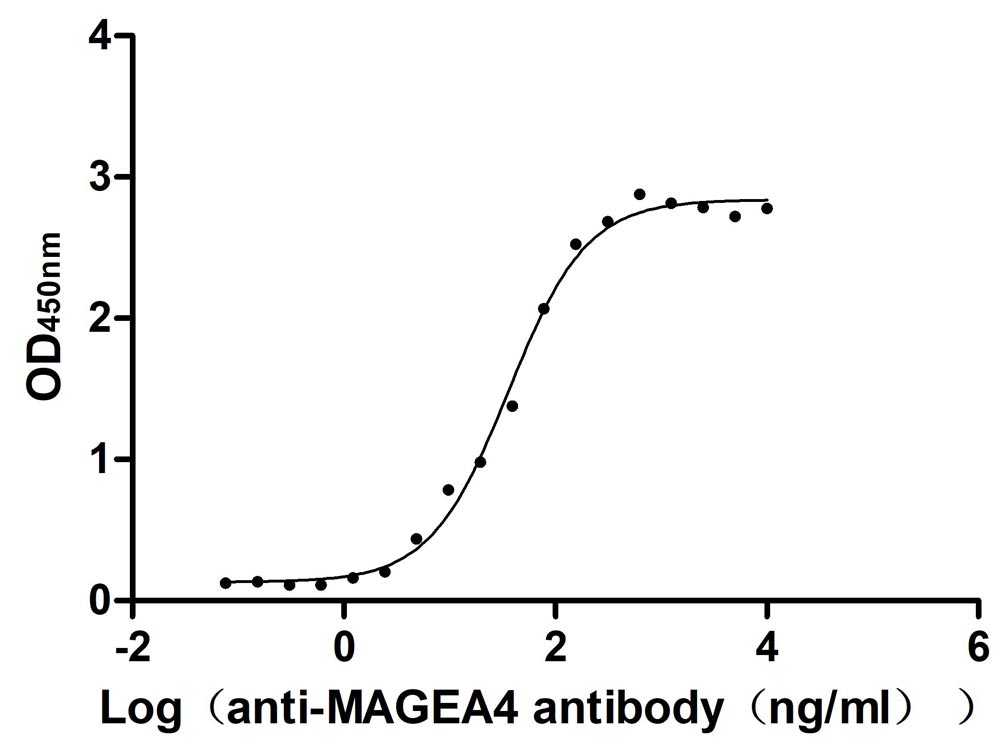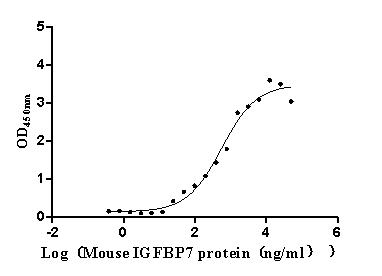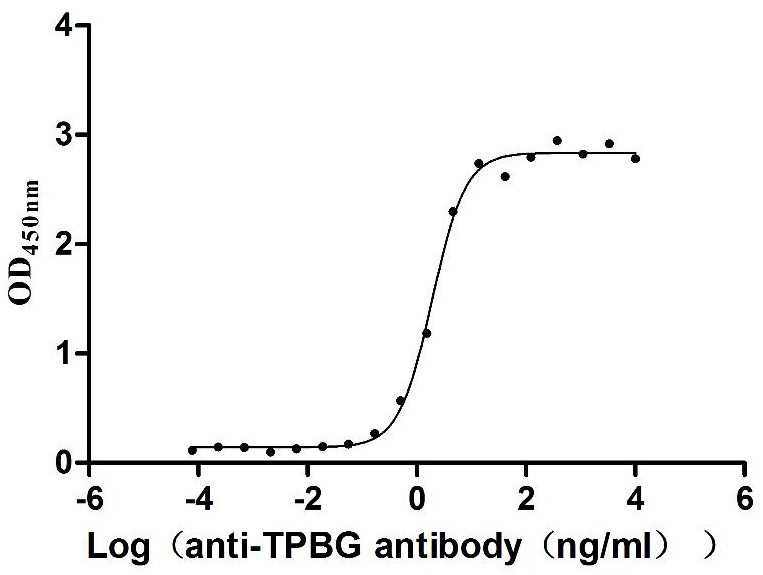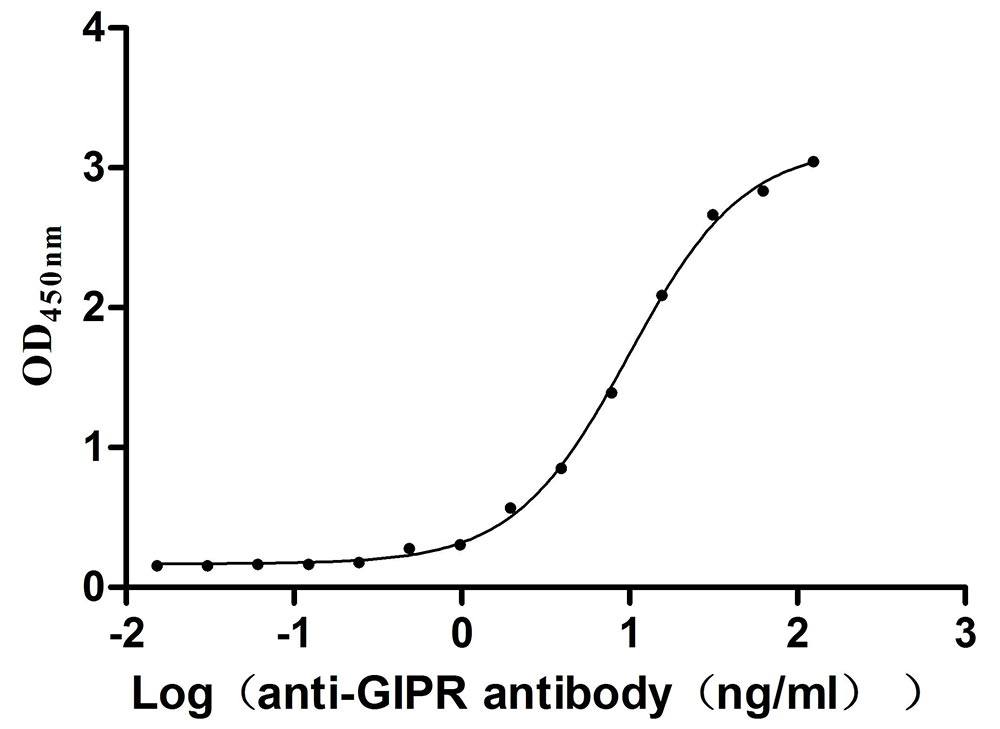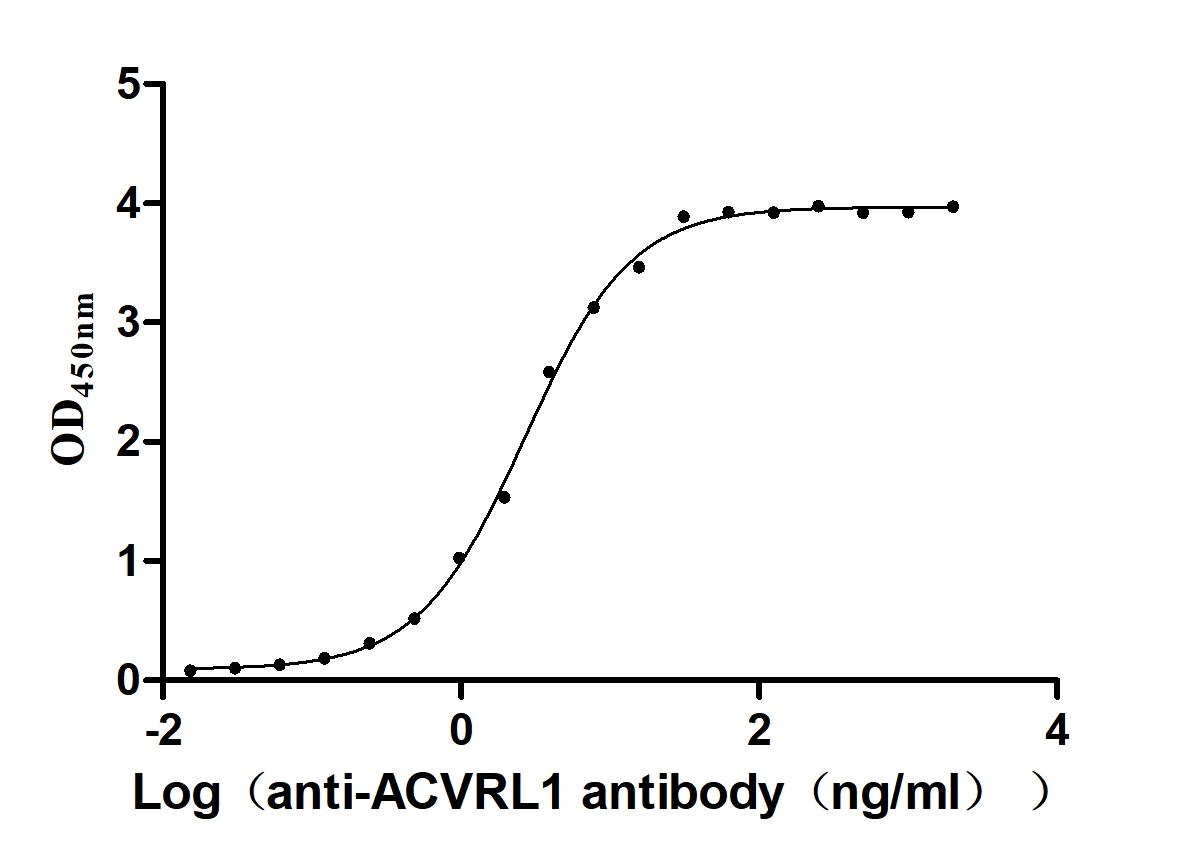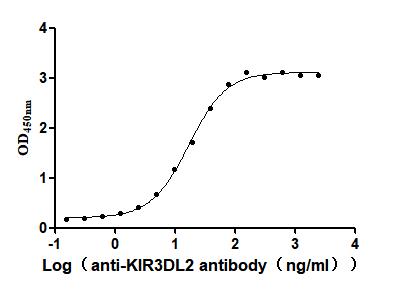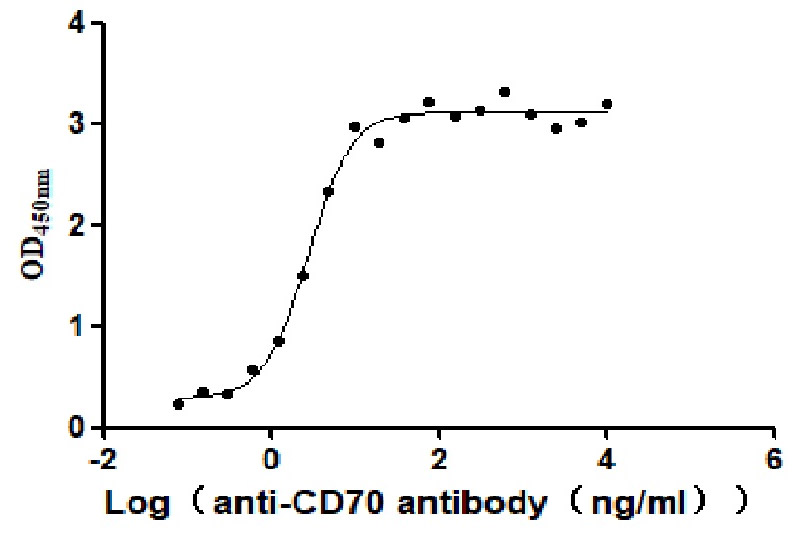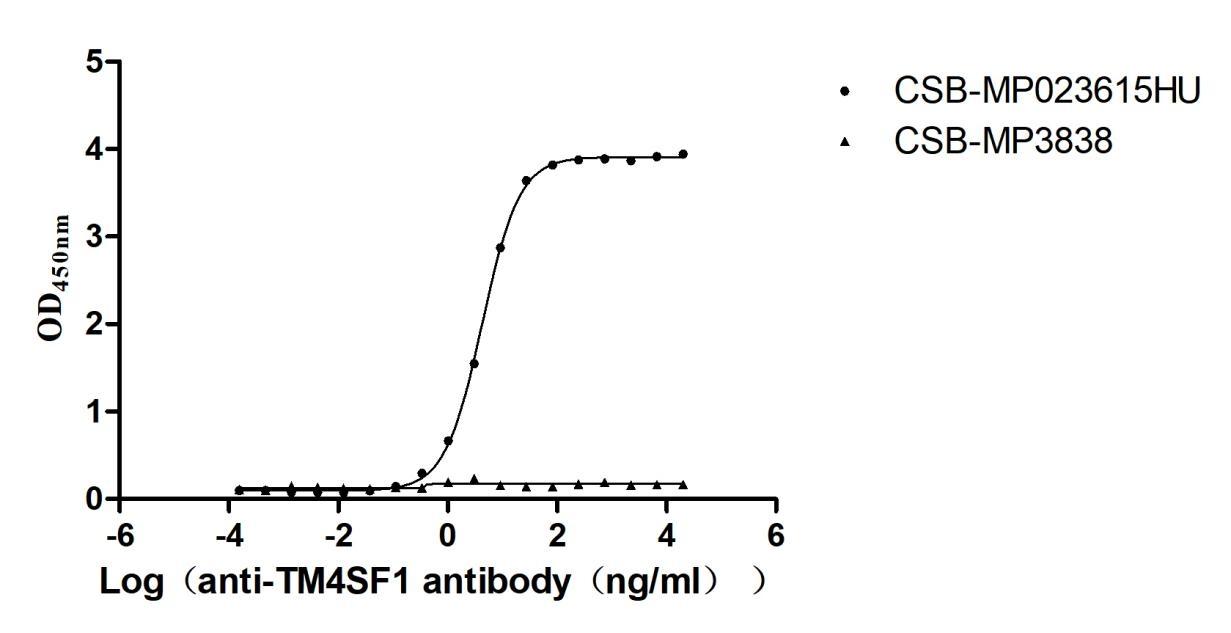Recombinant Human Zinc finger FYVE domain-containing protein 26 (ZFYVE26), partial
-
中文名称:人ZFYVE26重组蛋白
-
货号:CSB-YP734654HU
-
规格:
-
来源:Yeast
-
其他:
-
中文名称:人ZFYVE26重组蛋白
-
货号:CSB-EP734654HU
-
规格:
-
来源:E.coli
-
其他:
-
中文名称:人ZFYVE26重组蛋白
-
货号:CSB-EP734654HU-B
-
规格:
-
来源:E.coli
-
共轭:Avi-tag Biotinylated
E. coli biotin ligase (BirA) is highly specific in covalently attaching biotin to the 15 amino acid AviTag peptide. This recombinant protein was biotinylated in vivo by AviTag-BirA technology, which method is BriA catalyzes amide linkage between the biotin and the specific lysine of the AviTag.
-
其他:
-
中文名称:人ZFYVE26重组蛋白
-
货号:CSB-BP734654HU
-
规格:
-
来源:Baculovirus
-
其他:
-
中文名称:人ZFYVE26重组蛋白
-
货号:CSB-MP734654HU
-
规格:
-
来源:Mammalian cell
-
其他:
产品详情
-
纯度:>85% (SDS-PAGE)
-
基因名:ZFYVE26
-
Uniprot No.:
-
别名:DKFZp686F19106; DKFZp781H1112; FYVE domain-containing centrosomal protein; FYVE-CENT; KIAA0321; Spastic paraplegia 15 (complicated autosomal recessive); Spastizin; SPG15; ZFY26_HUMAN; ZFYVE 26; ZFYVE26; Zinc finger FYVE domain containing 26; Zinc finger FYVE domain containing protein 26; Zinc finger FYVE domain-containing protein 26
-
种属:Homo sapiens (Human)
-
蛋白长度:Partial
-
蛋白标签:Tag type will be determined during the manufacturing process.
The tag type will be determined during production process. If you have specified tag type, please tell us and we will develop the specified tag preferentially. -
产品提供形式:Lyophilized powder
Note: We will preferentially ship the format that we have in stock, however, if you have any special requirement for the format, please remark your requirement when placing the order, we will prepare according to your demand. -
复溶:We recommend that this vial be briefly centrifuged prior to opening to bring the contents to the bottom. Please reconstitute protein in deionized sterile water to a concentration of 0.1-1.0 mg/mL.We recommend to add 5-50% of glycerol (final concentration) and aliquot for long-term storage at -20℃/-80℃. Our default final concentration of glycerol is 50%. Customers could use it as reference.
-
储存条件:Store at -20°C/-80°C upon receipt, aliquoting is necessary for mutiple use. Avoid repeated freeze-thaw cycles.
-
保质期:The shelf life is related to many factors, storage state, buffer ingredients, storage temperature and the stability of the protein itself.
Generally, the shelf life of liquid form is 6 months at -20°C/-80°C. The shelf life of lyophilized form is 12 months at -20°C/-80°C. -
货期:Delivery time may differ from different purchasing way or location, please kindly consult your local distributors for specific delivery time.Note: All of our proteins are default shipped with normal blue ice packs, if you request to ship with dry ice, please communicate with us in advance and extra fees will be charged.
-
注意事项:Repeated freezing and thawing is not recommended. Store working aliquots at 4°C for up to one week.
-
Datasheet :Please contact us to get it.
相关产品
靶点详情
-
功能:Phosphatidylinositol 3-phosphate-binding protein required for the abcission step in cytokinesis: recruited to the midbody during cytokinesis and acts as a regulator of abcission. May also be required for efficient homologous recombination DNA double-strand break repair.
-
基因功能参考文献:
- Our protocol showed high specificity and sensitivity for homozygosity detection and facilitated the identification of novel mutations in GAN, GBA2, and ZFYVE26 in four families affected by hereditary spastic paraplegia or Charcot-Marie-Tooth disease PMID: 26492578
- spastizin and spatacsin were essential components for the initiation of lysosomal tubulation. Together, these results link dysfunction of the autophagy/lysosomal biogenesis machinery to neurodegeneration. PMID: 25365221
- ZFYVE26 is a key determinant of autophagosome maturation PMID: 24284334
- spg15 should be search for in the case of juvenile levodopa reponsive parkinsonism PMID: 24366652
- We propose AP-5, SPG15, SPG11 form a coat-like complex, with AP-5 involved in protein sorting, SPG15 facilitating docking of the coat onto membranes by interacting with PI3P via its FYVE domain, and SPG11 (possibly together with SPG15) forming a scaffold. PMID: 23825025
- spastizin interacts with the autophagy related Beclin 1-UVRAG-Rubicon multiprotein complex and is required for autophagosome maturation. PMID: 24030950
- SPG15 was strongly expressed in cortical and spinal motor neurons and in embryos. It partially co-localized with multiple organelles, particularly with protein-trafficking vesicles, endoplasmic reticulum, microtubules and the mitochondria surface. PMID: 21545838
- Findings suggest a positive feedback loop for recruitment of FYVE-CENT and Beclin 1 to the intercellular bridge during cytokinesis, and reveal a novel potential tumor suppressor mechanism for Beclin 1. PMID: 21455500
- PtdIns(3)P production is essential for proper cytokinesis. PtdIns(3)P-binding centrosomal protein FYVE-CENT and TTC19 control cytokinesis through their translocation from the centrosome to the midbody mediated by the kinesin protein KIF13A. PMID: 20208530
- phenotypic heterogeneity of SPG15 in which mental retardation or cognitive deterioration, but not all other signs of Kjellin syndrome, are associated with hereditary spastic paraplegia and significantly reduces the SPG15 locus PMID: 17661097
- Autosomal recessive HSP-TCC is a frequent subtype of complicated HSP in Tunisia and is clinically and genetically heterogeneous. SPG11 and SPG15 are the major loci for this entity. PMID: 18332254
- Refinement of SPG15 to a 2.64 Mb genetic interval on chromosome 14q23.3-q24.2 and the identification of ZFYVE26 was reported in families with complicated autosomal-recessive spastic paraplegia, including Kjellin syndrome. PMID: 18394578
- Of patients with hereditary spastic paraplegia-thin corpus callosum, the largest analyzed so far, SPG15 was the second most frequent form (11.5%) after SPG11. PMID: 19805727
- phenotype and mutation frequency compared with SPG11 in complicated hereditary spastic paraplegia PMID: 19917823
显示更多
收起更多
-
相关疾病:Spastic paraplegia 15, autosomal recessive (SPG15)
-
亚细胞定位:Cytoplasm, cytoskeleton, microtubule organizing center, centrosome. Midbody. Note=Localizes to the centrosome during all stages of the cell cycle. Recruited to the midbody during cytokinesis by KIF13A.
-
组织特异性:Strongest expression in the adrenal gland, bone marrow, adult brain, fetal brain, lung, placenta, prostate, skeletal muscle, testis, thymus, and retina. Intermediate levels are detected in other structures, including the spinal cord.
-
数据库链接:
Most popular with customers
-
Recombinant Human Melanoma-associated antigen 4 (MAGEA4) (Active)
Express system: Mammalian cell
Species: Homo sapiens (Human)
-
Recombinant Mouse Complement component C1q receptor (Cd93), partial (Active)
Express system: Mammalian cell
Species: Mus musculus (Mouse)
-
Recombinant Macaca fascicularis Trophoblast glycoprotein (TPBG), partial (Active)
Express system: Mammalian cell
Species: Macaca fascicularis (Crab-eating macaque) (Cynomolgus monkey)
-
Recombinant Mouse Gastric inhibitory polypeptide receptor (Gipr), partial (Active)
Express system: Mammalian cell
Species: Mus musculus (Mouse)
-
Recombinant Human Serine/threonine-protein kinase receptor R3 (ACVRL1), partial (Active)
Express system: Baculovirus
Species: Homo sapiens (Human)
-
Recombinant Human Killer cell immunoglobulin-like receptor 3DL2 (KIR3DL2), partial (Active)
Express system: Mammalian cell
Species: Homo sapiens (Human)
-
Recombinant Human CD70 antigen (CD70), partial (Active)
Express system: Mammalian cell
Species: Homo sapiens (Human)
-
Recombinant Human Transmembrane 4 L6 family member 1(TM4SF1)-VLPs (Active)
Express system: Mammalian cell
Species: Homo sapiens (Human)


